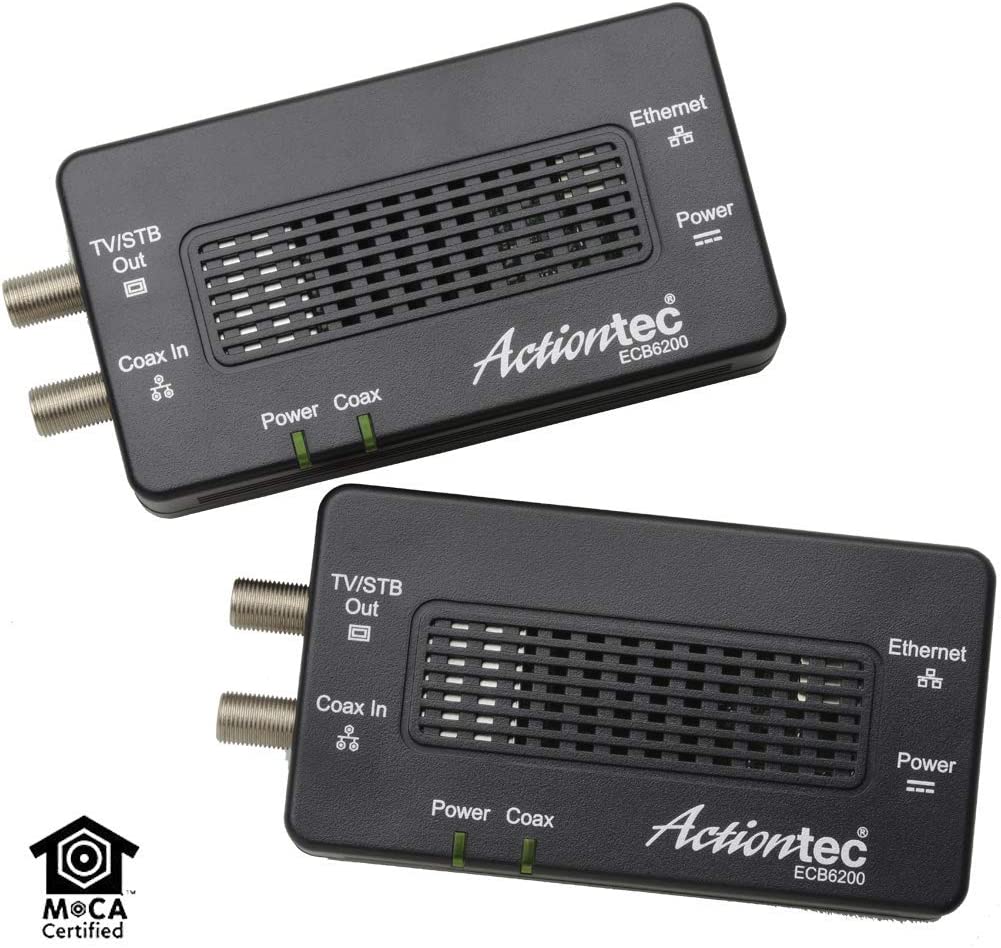
As I’m about to drop cable TV in an effort to start saving money on something I hardly use, I got curious about the Ethernet port on the back of my set top boxes. When we moved about four years ago, the tech doing the install in the new house looked at my existing box and said “wow, that’s old” and then set me up with two brand new, much smaller, modern looking Arris boxes. I noticed at the time that they had an Ethernet port on the back, and wondered about it, but I didn’t look into it. I though maybe the box was some kind of all-in-one unit that could double as a cable modem.
Recently, one of my mother-in-law’s cable boxes started to malfunction, so I took it home with me so that I could get it swapped out. Her box was a little older, but while it was sitting on the half wall between my kitchen and family room, I noticed that it, too, had an Ethernet port. Intrigued, I started doing some research.
It turns out that there is a technology called MoCA, short for Multimedia Over Coax Alliance. MoCA allows sending Ethernet signals over the coax cable in your home, similar to the way powerline Ethernet (i.e. Homeplug) works over electrical lines. It looks like this is the reason for the Ethernet port on the box, at least for the Arris boxes, anyway, though it isn’t clearly documented in the product manual beyond a one-liner that says it supports MoCA.
To make it work, you’d need to add a MoCA adapter near your network switch. They are readily available on Amazon, with prices ranging anywhere from about $20 for a pair all the way up to over $200 a piece. To make it work, you plug the Ethernet end of the device into a port on your router and connect the coax end to your home’s cable TV line. Then you connect another Ethernet cable between the cable box and the device you want to connect to the network, like a smart TV or a streaming adapter, or even a computer. From what I’ve read, you can expect maximum speeds of around 200Mbps—not super fast, but certainly decent enough to make streaming work in a WiFi dead zone.
Though I haven’t actually used it, MoCA is supposed to work fine alongside your regular cable service. I’m now wondering if I might be able to squeeze even a bit more speed out of it if I disconnect the incoming line (which will soon only carry Internet service, with my modem already located where the service enters the house), and run it over the otherwise dead coax lines.
I’ve been considering running CAT-6 to my TVs to get better connections as I switch to streaming everything, but MoCA could make for a much easier installation, and probably with no noticeable difference in video quality.
Have you tried MoCA? I’d love to hear your experience in the comments.